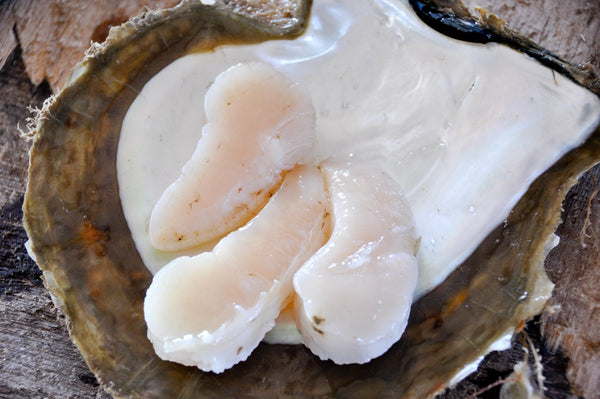... continued from September 9th
A Day in the Life
My experience on a South Sea pearl farm in Australia
By Ahbra Perry of ‘On the Reel Productions.’
 Extreme skill and precision is precision is required when operating on an oyster. This job is tasked to only the most masterful and reliable hands with years of training under their belt. Every time the oyster is handled it is at risk. Every step in the process of caring for this creature is important, but this step, implanting the seed, is the most crucial for the future of the pearl and the oysters’ survival. The fate of the farm lies in the hands of these techs.
Extreme skill and precision is precision is required when operating on an oyster. This job is tasked to only the most masterful and reliable hands with years of training under their belt. Every time the oyster is handled it is at risk. Every step in the process of caring for this creature is important, but this step, implanting the seed, is the most crucial for the future of the pearl and the oysters’ survival. The fate of the farm lies in the hands of these techs.
Nucleating an oyster would be similar to performing oral surgery on a person who happens to house all of their vital organs in their mouth. What was happening here was like getting a cavity filled by a dentist who walks on a Stairmaster while operating in a dimly-lit flea market.
Patrick, the farm manager, reassures me: “Our shells don’t come from a lab, they come from the wild. Pearls, as rare as they are, occur naturally...so you shouldn’t need a doctor’s office or computer laboratory to facilitate that, just an understanding and appreciation of the animal. A little dirt won’t hurt.” As for the choppy seas: “All the techs get used to it - they have a good center of gravity and their eyes adjust.”
After the pearls are harvested, the oysters are re-nucleated, put back into crates, picked up by a deck hand, stitched into panels, and put back into the water where they will be cared for and tended for the another years. If the oyster was not a great pearl grower, it still gets another shot or two at redemption. However, eventually the subpar oysters are split open and cleaned out. Their adductor muscle, a translucent thumb-sized piece of meat, is removed and packed for market. Some of the crew slurp a raw one or two down during cleanings. It must be an acquired taste, or possibly the best alternative to Francesco’s approaching lunch. Pearl meat, is it is called, sells like crazy in Asia - around $100 per kilogram for raw, or $400 per kilogram for the dried stuff. The rest of the oyster is tossed to the seagulls and the shell is cleaned off and exported for processing.
Pearl meat, fresh, clean, and ready to eat
After lunch, I follow Patrick up to the wheelhouse to look at some of the harvest. The wheelhouse has three walls of large windows, offering great daylight for pearl-sorting. Patrick dumps a basket of freshly harvested pearls into a table-top washer, lets it spin noisily for a few minutes, and empties the pearls onto a white gym towel. Patrick sets up four empty Tupperware and goes to work.
I really did not expect him to move so quickly. He grabs a pearl between his fingers and almost by touch alone knows in which container to toss it. With absolute certainty he can decide the fate of each pearl in a matter of milliseconds. Only after playing back the footage in slow-motion (240 frames per second, or 1/10th the speed of real life) was I also able to decipher the categories of the pearls.
Pat holds up a high luster 14mm perfectly round White South Sea pearl in the sunlight and smiles. “This is the best part,” he says. “I had low expectations for this harvest because the shells where hit by two typhoons in two months.” He rolls his hands lovingly through a bucket of about 100 perfectly round white pearls. Pat grabs two more pearls out of the Tupperware and hollers at me to come out onto the deck. “Come look at this!”
Patrick Moase, the Clipper and Autore GM, takes a moment to inspect a near perfect pearl in the sun.
The sun is starting to get low and we hold the pearls up to the light. They reveal a deep pink glow. He snaps his arm back and chucks the gem out into the sea. I choke, about to dive in after it. “Ha, just kidding!” He laughs, revealing the pearl in his hand. “This is a good one, I would go overboard first!”
Look for the final installment on September 16th …







